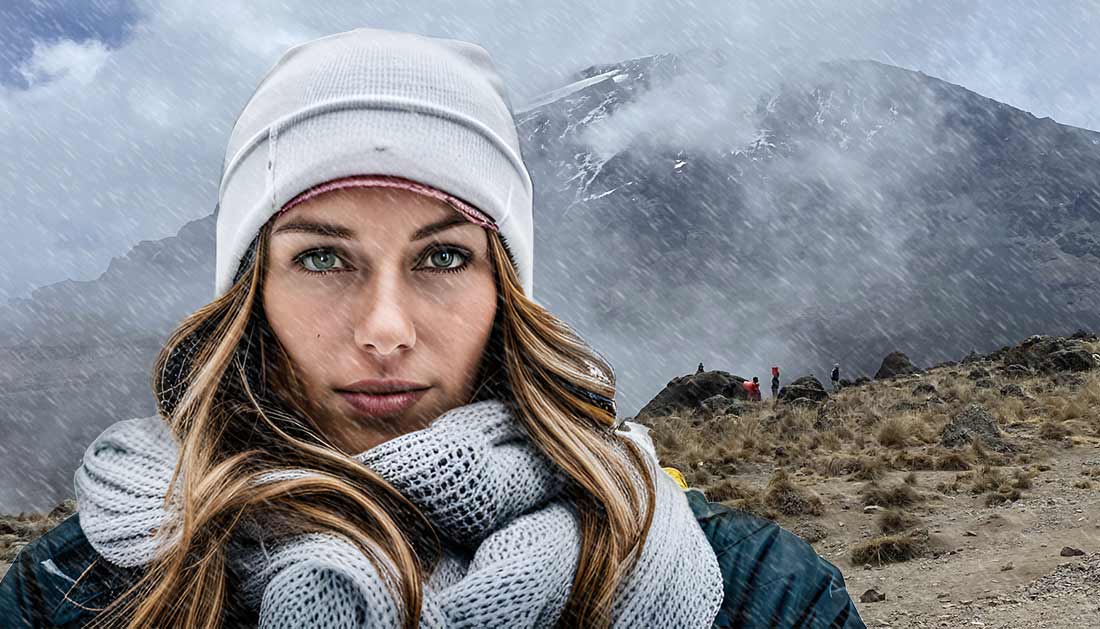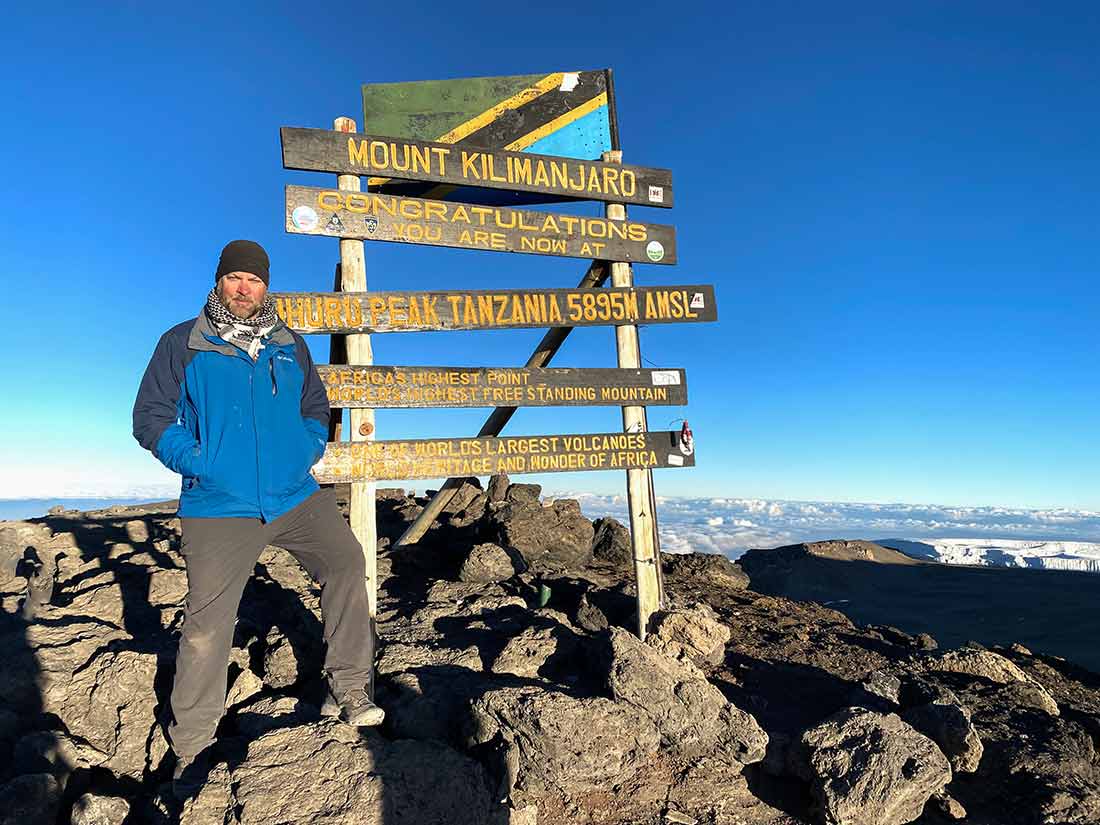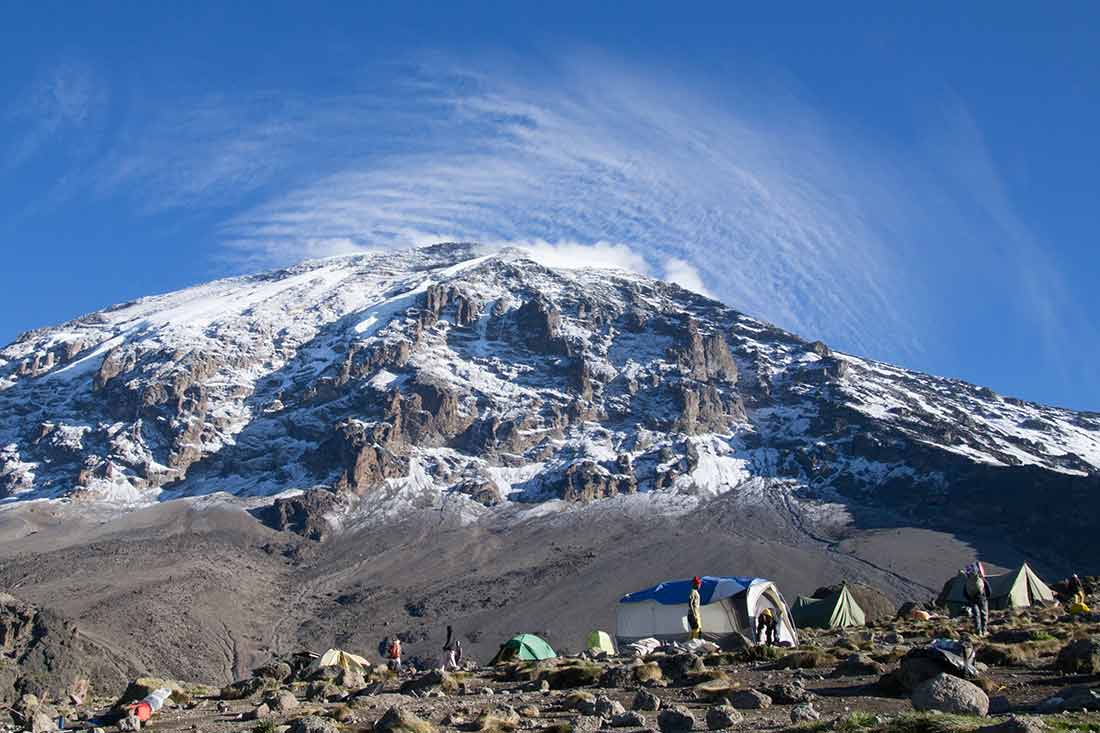Mount Kilimanjaro, standing tall as the highest peak in Africa, is renowned for its majestic beauty and awe-inspiring landscapes. But beyond its scenic splendor, the mountain also poses a daunting challenge to climbers in the form of bone-chilling temperatures. In this article, we delve into the frigid conditions you may experience on Kilimanjaro. But how cold does it get on Kilimanjaro?
The Altitude Factor
At a staggering height of 19,341 feet (5,895 meters), Kilimanjaro’s summit, Uhuru Peak, resides in a zone of perpetual ice and snow. As climbers ascend the mountain, the air becomes increasingly thin, causing a drop in temperature. With every 100 meters gained in elevation, the temperature can fall by approximately 1.08° Fahrenheit (0.6° Celsius ). Consequently, the higher altitudes experience sub-zero temperatures, making adequate preparation for the cold a crucial element for a successful climb.
Seasonal Variations
While the equatorial location of Kilimanjaro typically evokes images of warmth, the mountain’s elevation and the effects of the trade winds create a unique microclimate. Kilimanjaro experiences two distinct rainy seasons and two dry seasons, each with its impact on temperatures. The most popular climbing periods are the dry seasons: December to February and June to October. During these months, temperatures at the summit can plummet to a chilling 0° Fahrenheit (-17° Celsius)or even lower with wind chill. It is not uncommon for climbers to encounter frost, ice, and snow during their ascent.
Wind and Wind Chill
The strong winds that buffet Kilimanjaro exacerbate the already icy conditions. Wind chill refers to the perceived temperature experienced by the body when exposed to both wind and cold air. Even on relatively calm days, winds can reach speeds of 25 miles per hour (40 kilometers per hour) or more on the upper slopes. This wind chill effect can make the ambient temperature feel significantly colder.
Preparation for the Cold
To conquer the freezing temperatures on Kilimanjaro, climbers must come equipped with appropriate clothing and gear. Layering is key, as it allows for flexibility in adjusting body temperature. A combination of base layers, insulating mid-layers, and windproof outer shells helps to retain warmth while allowing moisture to escape. Insulated gloves, thermal socks, a warm hat, and a balaclava or face mask are essential to protect extremities from the biting cold. It is also crucial to have a good-quality four-season sleeping bag that can withstand sub-zero temperatures. We do rent down sleeping bags that we believe are extremely comfortable.
Acclimatization and Safety
A gradual ascent is vital for acclimatization and coping with the extreme conditions of Kilimanjaro. Climbers follow one of the several established routes, allowing their bodies to adjust to the altitude and cold temperatures over several days. Adequate rest, hydration, and nutrition are crucial to maintaining body warmth and combating altitude-related illnesses.
Final Thoughts
While Kilimanjaro offers an extraordinary climbing experience and breathtaking vistas, its extreme cold can pose a significant challenge to adventurers. The altitude, seasonal variations, fierce winds, and wind chill factor combine to create a frosty environment that demands careful preparation and respect for nature’s power. By equipping themselves with proper clothing and gear, and adhering to recommended climbing protocols, climbers can overcome the icy trials of Kilimanjaro and achieve the remarkable feat of standing atop Africa’s highest peak.






